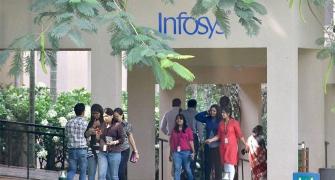The party is over for investors. Equities markets are being hammered badly. And there is general unrest all around. As usual, now that they are hurt, investors are looking at low risk options, which would protect their principal amount at least.
What are the available options? There are small savings and bank deposits. The dismal post-tax returns, however, are a serious deterrent. The other alternative is a fixed maturity plans (FMPs) of mutual funds which are tax- efficient, but give low returns.
Of course, equities can still be a great option. A word of caution though, we are unlikely to see the breathtaking speed with which market took off during the last few years and there will be intermittent volatility and pain.
For the high net worth individuals, Portfolio Management Services (PMS) investors there are structured products called the equity-linked debentures. These give you the upside of equities and protect the downside.
Popularly known as capital protection funds, mutual funds are now making these products available to retail investors as well. ICICI Prudential asset management company (AMC) launched their Nifty-linked FMP a closed-ended product and now Deutsche AMC has launched a similar product.
The actual terms of these products may vary slightly, but the broad theme of the product works in this manner. These index linked fixed maturity plans are linked to an index like the Nifty or Sensex. The AMC invests a pre-determined part of the monies collected in fixed income securities, which could be between 15 per cent and 25 per cent.
The balance is invested in equity-linked debentures (ELDs). These ELDs are floated by many issuing banks like Citibank, Deutsche bank, Merrill Lynch, Kotak bank and others. ELDs are floating rate debt instruments whose coupon (interest) is based on the return of the underlying equity index.
The ELD's will generally return the principal on maturity. A word of caution though: always assess the creditworthiness of the issuer should be done before investing. The return on the underlying specified index will be calculated on the basis of the terms of the ELD.
For instance, in case of Deutsche equity-linked three year and S&P CNX Nifty-linked FMP, the returns of the product will be computed, based on formulas.
As is clear from the table, the product would give a return of 108 per cent in a three-year period, provided the Nifty rises by 96 per cent in that period. If the issuer of ELD defaults, there is a likelihood of investor losing a part of principal.
Though there is no guarantee of principal in these products, it is improbable that your principal will be eroded because the credit quality of the issuer is good.
Of course, there are other Nifty- linked PMS products where the principal is protected and there is a guarantee as well. There are charges for such a guarantee, which is a flat fee of 4 per cent to 5 per cent. Premature redemption may be possible with a heavy exit load. They may even be listed on the stock exchange.
Long-term capital gains with the benefit of indexation will be applicable for these products. To summarise, if an investor invests in these schemes their downside risk of capital erosion is protected (promised - not assured) and on the upside, they may get a return in-line with the appreciation of Nifty. At worse, you don't lose your capital.
The writer is head, mutual funds, Derivium Capital & Securities.
Numbers that matter
Determination of the initial value: It is the average of the first three months (M1, M2, M3) or a value higher than 96 per cent of the "Start level of Nifty". (Start level of Nifty = the value of Nifty at the time of allotment.).
The initial value is computed as follows:
Initial Index Reference Value = 5,250+ 5,000+ 4,800/3 = 5,016.66
Determination of the final value: It is the average of 31st, 32nd and 33rd months (M31, M32, M33) or a value up to two times of the "Start level of Nifty" or whichever is lower.
The final value is computed as follows:
The values considered as follows:
The, Final Index Reference Value = 9,500+ 10,000+ 10,000/3 = 9,833.33
Multiply participation factor, with the difference between final and initial value as above. (Participation ratio is the ratio of returns of the underlying index paid by the ELD) In the case of ICICI Prudential, it is 100 per cent participation and in the case of Deutsche, it is 105 per cent of the performance of the index.
Return under the product = Nifty return * Participation factor 96.01 * 105% = 100.81%








